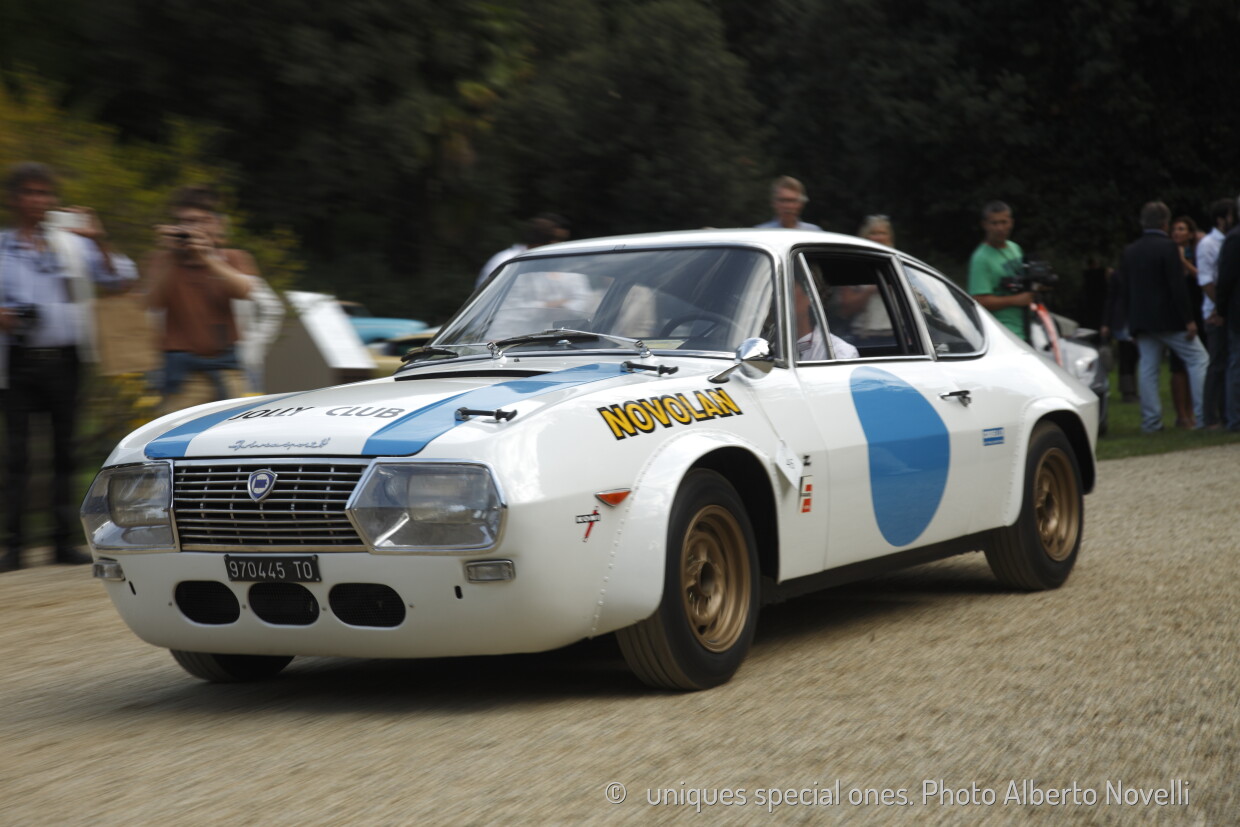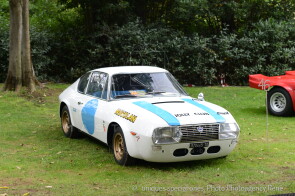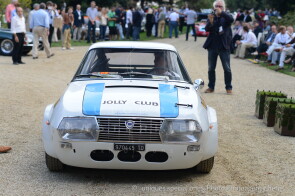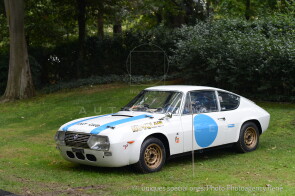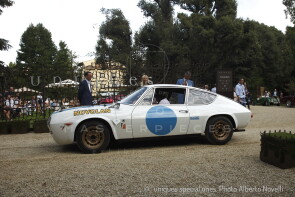
1967 Lancia Fulvia Sport 1,3
ON/OFF
Why am I an Automotive Masterpiece?
Before Fiat’s takeover, Lancia introduced one of its last truly independent projects: the Fulvia. Presented at the 1963 Geneva Motor Show, the model embodied the brand’s philosophy of blending crisp Italian styling, advanced engineering, and agile performance in a compact yet refined package. Conceived under the guidance of technical director Antonio Fessia as a successor to the Appia, the Fulvia marked a decisive step forward in both design and technology. It adopted a front-wheel-drive layout at a time when most Italian competitors were still rear-driven, and it came standard with disc brakes on all four wheels – features that underscored its modern character. Power came from a narrow-angle DOHC V4 designed by Zaccone Mina, mounted at a 45-degree angle, a technical curiosity that contributed to the Fulvia’s distinct identity. Though production eventually surpassed 300,000 units, the model did not resolve Lancia’s financial difficulties, and the Fiat acquisition soon followed. The first version launched was a sober four-door berlina, but it was the coupé, introduced in 1965 and styled by Pietro Castagnero, that truly defined the Fulvia’s image. Low, sharp, and perfectly proportioned, the coupé reflected the elegance of Italian coachbuilding tradition while hinting at sporting intent. Over the years, Lancia enriched the coupé range with numerous trim levels and progressively more powerful engines, culminating in the legendary HF versions. The pinnacle was the 1.6 HF, unveiled in 1969: with 115 horsepower from its 1,584 cc engine, a five-speed gearbox, and a top speed around 180 km/h, it became the roadgoing counterpart to Lancia’s rally machines. The coupé also generated derivatives such as the Fulvia Sport, designed and built by Zagato, which combined lightweight construction with avant-garde lines. Yet it was the coupé in HF guise that secured the model’s lasting fame. Rallying soon became the Fulvia’s natural stage, where its precise handling and nimble balance made up for modest power. From the mid-1960s onward, the Fulvia scored important results in European rallies, consistently battling against more powerful rivals. Its greatest triumph came in 1972, when a Fulvia 1.6 HF driven by Sandro Munari clinched the International Championship for Manufacturers – a precursor to the World Rally Championship. That victory marked both the peak of the Fulvia’s career and a milestone in Lancia’s long rally tradition. Produced until 1976 in berlina, coupé, and Sport versions, the Fulvia closed an era for the company. It remains admired not only as an elegant, technically sophisticated car but also as a symbol of Lancia’s ingenuity before Fiat’s influence reshaped the brand. For enthusiasts, especially of the coupé, it stands as the last “true” Lancia – a car in which engineering originality, Italian style, and motorsport glory converged.
As with the Appia, Flavia and Flaminia, Lancia entrusted Zagato with the task of creating the sport version of the Fulvia, characterized by an aluminum body and refined aerodynamics. Designed by Ercole Spada and built in the workshops of the Milanese coachbuilder at Terrazzano di Rho, the Fulvia Sport featured an extremely modern and streamlined fastback profile. Launched in 1965, the Sport adopted the same mechanicals as the Coupé – except for the final drive ratio – but thanks to improved aerodynamics it was capable of higher top speeds. Nevertheless, it was almost never employed in rally competitions due to the fragility of the monocoque structure supporting the aluminum body and to general characteristics more suited to circuit racing, a field where Lancia was not active at the time. More than by its technical evolution – which followed step by step that of the Coupé – the various “series” of the Zagato can be distinguished by the materials used for the bodywork. Between 1965 and 1967, the Sport featured a body entirely in Peraluman alloy. From 1968 to 1970, the body was made of steel with bonnet, doors and spare wheel compartment flap in Peraluman, while the tailgate was always in steel on all versions. The engines and mechanical updates followed those of the Coupé, except for the absence of the 1231 cm³ unit. One distinctive feature of the Fulvia Sport Zagato was the electrically operated tailgate, which could be lifted a few centimeters by a dashboard switch. An electric motor positioned under the rear opening allowed air to circulate into the passenger compartment. In 1970, the mechanical components of the second series were fitted to the last 600 bodies of the first series. At the end of 1970, the body became entirely steel, losing the Peraluman elements. On this occasion the model was slightly restyled by Mittino, with functional updates: a higher roofline for easier access, widened fenders to house larger tires, and a front-hinged bonnet to comply with safety standards of the time. Production ended in 1972, after approximately 6,183 units had been assembled by Zagato. The artisanal construction of the Fulvia Sport resulted in a noticeable asymmetry in the shape of the fenders, a peculiarity retained even on the second-series bodies.
Of particular historical and collector's interest is the defined Competizione series, which at the request of sporting customers or the Lancia Squadra Corse, were fitted with lightened Peraluman bodywork, side and rear windows in Plexiglas, widened wheel arches and Campagnolo 6J13 rims. Although they were intended for sporting activity, the Competizione had standard engines (818.302 and 818.303 engines) not in the HF set-up. The HF engine (second series) was used only on the Sport 1600, but the HF logo does not appear (the car has the same set-up as the 1.3 S and Lancia never requested homologation of the car for racing). In 1969 Maglioli and Pinto, aboard the Fulvia prototype with chassis 001911, engine 818.540 and 5-speed gearbox, finished eleventh overall and first in the prototype class at the 24 Hours of Daytona. This car, chassis no. 818332001289, is the second built and was sold to the Italian gentleman driver Fiorenzo Genta who ran it at the 1968 Monte Carlo Rally and Italian hill-climbs, winning the GT class up to 1.3-liter of the Italian Championship; in 1969 it was raced by Anastasio.
